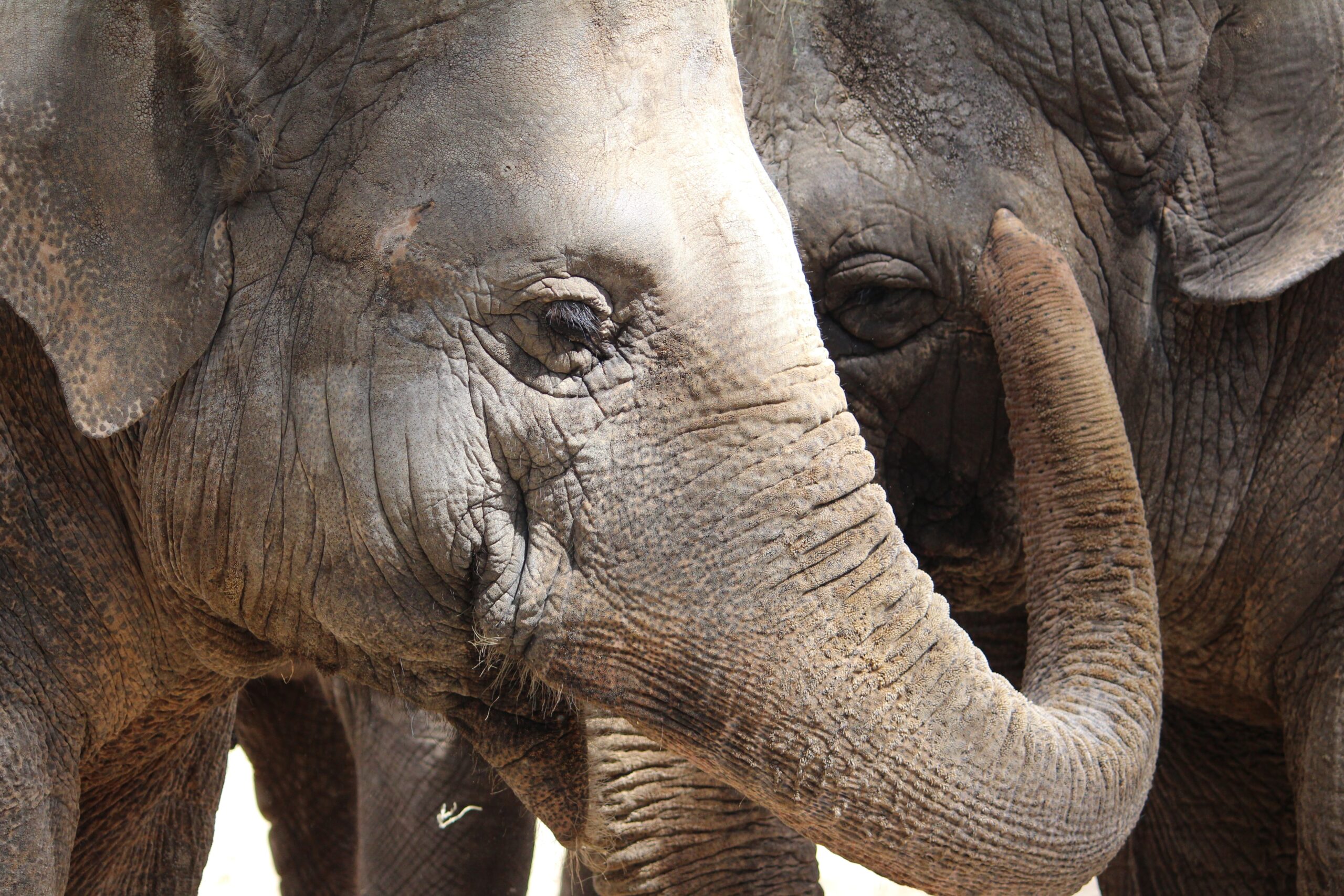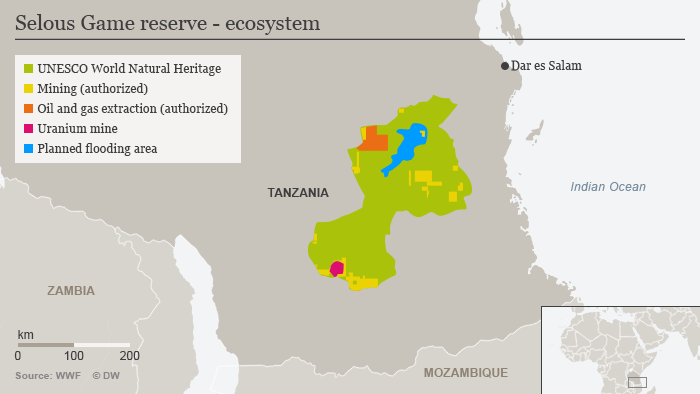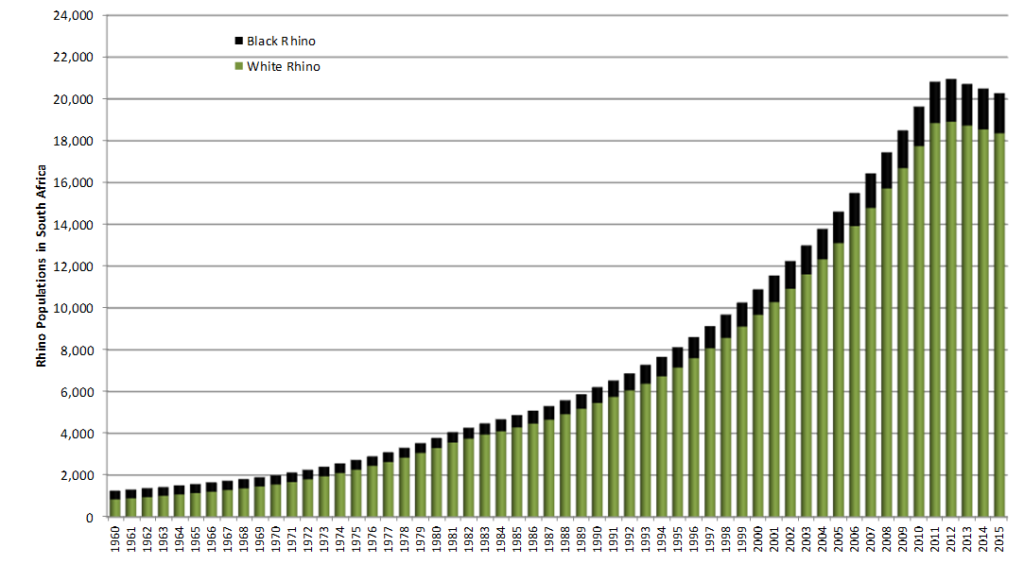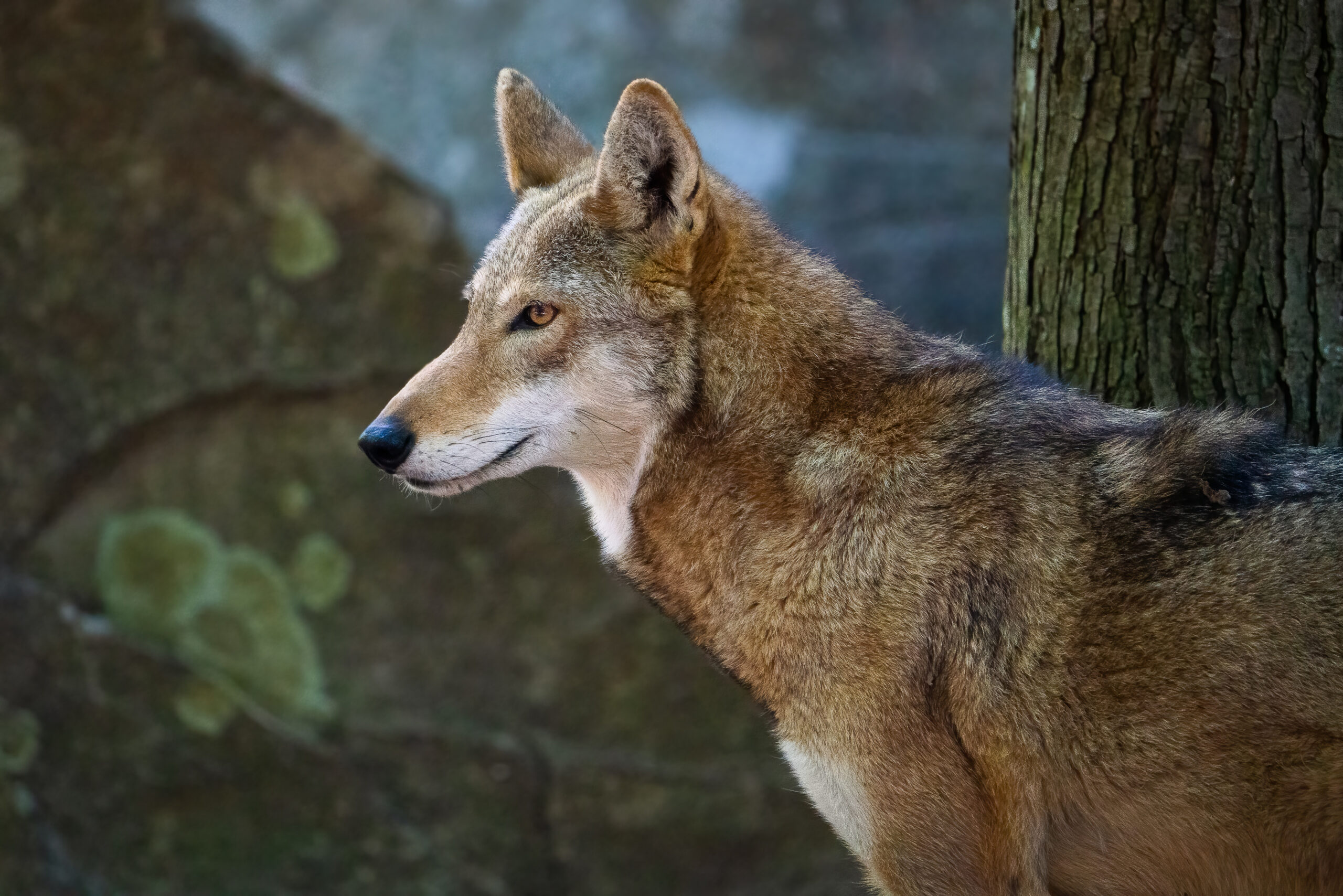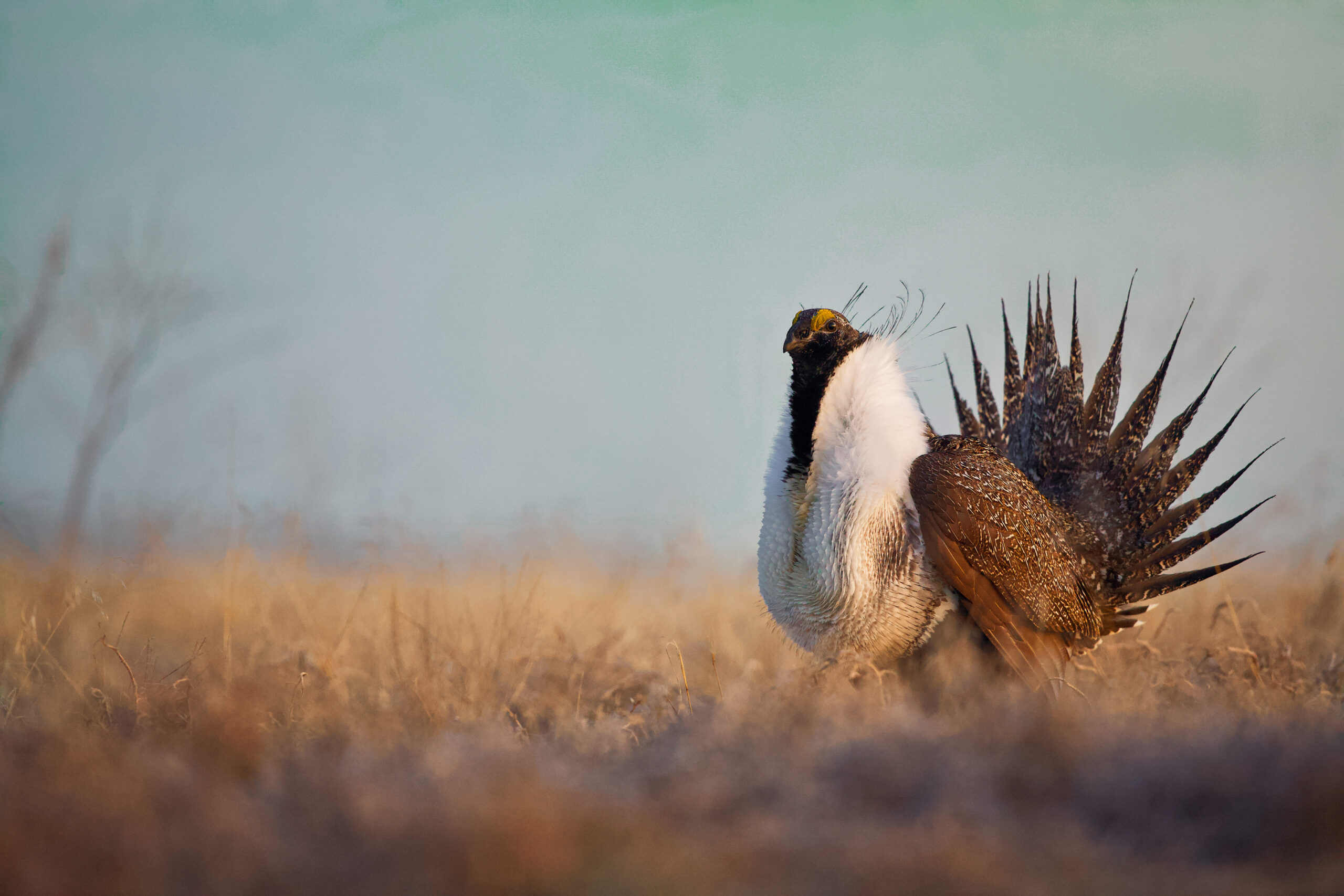Prepared statement before the U.S. House Natural Resources Committee – Waters, Oceans, and Wildlife Subcommittee’s hearing on H.R. 2245, the CECIL Act.
Summary
- The context of African conservation is rapidly changing.
- Trophy hunting has and can provide the incentives and revenue necessary to make conservation efforts more resilient in the face of that change while conserving the health of ecosystems to make that change sustainable.
- Trophy hunting and photo-tourism are not interchangeable, and restrictions on trophy hunting have a track record of undermining the conservation of ecosystems and wildlife.
Introduction
Distinguished members of the House Natural Resources Committee, thank you for the opportunity to appear before you to provide testimony on the Conserving Ecosystems by Ceasing the Importation of Large Animal Trophies Act. My name is Catherine Semcer, and I am a research fellow with the Property and Environment Research Center (PERC), a conservation research institute based in Bozeman, Montana.[1] PERC has a nearly 40-year history dedicated to exploring market-based solutions to conservation challenges.
Prior to joining PERC I was part of the leadership team of Humanitarian Operations Protecting Elephants (H.O.P.E.), a non-governmental organization that provides training, advisory, assistance and procurement services to African counter-poaching programs.
In the decades since many African states won their independence, trophy hunting has proven to be an effective, market-based tool to raise revenue and create economic incentives for wildlife conservation and sustainable development. This effectiveness is internationally recognized by respected agencies and institutions including the U.S. Fish and Wildlife Service,[2] the U.N. Food and Agriculture Organization,[3] the World Bank,[4] and the International Union for Conservation of Nature.[5] As part of holistic conservation programs, trophy hunting enables African nations to practice conservation at landscape scales while improving the lives and livelihoods of rural and indigenous peoples in a way that reduces dependence on foreign aid and philanthropy. It also helps achieve the U.S. foreign policy goal of African economies that thrive, prosper, and control their own destinies.[6]
Recent U.S. restrictions on the importation of certain hunting trophies have had negative consequences for the shared goals of the United States and its African partners. Enshrining and expanding such bans in law risks seeing these negative consequences metastasize over wider area, especially if no economically viable alternatives to trophy hunting are present or provided. For these reasons, Congress should proceed with a high degree of caution before taking any action that would undermine the ability of America’s African partners to use trophy hunting as part of their conservation and sustainable development programs.
My testimony will highlight the modern context of trophy hunting and explain some of the benefits trophy hunting currently provides; why the practice is not easily replaceable with other forms of tourism; the known costs of existing U.S. restrictions on hunting trophy imports from African nations; and the anticipated costs should those restrictions be expanded by Congress.
The context of African conservation is rapidly changing.
Africa is entering an age of increased autonomy, liberty, and prosperity following colonial and post-colonial periods. As U.S. Assistant Secretary of State, Bureau of African Affairs, Tibor Nagy recently testified before the House Committee on Foreign Affairs, “Africa is the dynamic continent of the future, and the direction it takes will have a major impact—for good or ill—not only in Africa but the rest of the world.”[7]
This dynamism is marked by changes in demographics and economic activity that are exerting significant influence on the practice of conservation in Africa. U.S. partnerships with African nations to deliver on shared conservation goals should align with these changes in order to avoid missing opportunities for success. Maintaining U.S. support for African trophy hunting programs provides a basis for such an alignment because these programs are generally grounded in market principles and are characterized by self-sufficiency and devolved authorities, thereby allowing them to take better advantage of regional, social, and economic trends.
Africa’s overall market size is increasing. Africa is projected to account for half of the world’s population growth over the next three decades, and by 2100, it is predicted to be the birthplace of one out of every three people.[8] Sub-Saharan Africa is home to six of the world’s 10 fastest growing economies, and the World Bank forecasts a regional GDP growth rate of 3.4 percent this year and as much as 3.7 percent in 2020-2021.[9] This latter growth is within one percentage point of the projected growth for the United States as forecast by the Congressional Budget Office.
This growth trend is expected to continue as the African Continental Free Trade Area (AfCFTA), poised to be the largest trade bloc in the world, reaches scale and maturity. Representing more than 1 billion people and a gross domestic product of $3.4 trillion, the AfCFTA will liberalize trade on the continent by lowering barriers to market access and the mobility of labor. This economic liberalization will contribute to the expected expansion of Africa’s middle class from 245 million to 380 million people over the next decade.[10] The rise of the continent’s middle class will parallel and be integrated with increased urbanization, and the number of cities with populations exceeding 5 million is expected to triple to 17 over the same 10 years.[11]
Increased demands for goods, services, and infrastructure will undoubtedly accompany this growth, with a likely increase in stress on African natural areas and ecosystems. Signs of this increased stress are already emerging along with indications that the economic competitiveness of wildlife habitat is decreasing relative to other land uses, especially in areas where hunting is not integrated into conservation programs.
In Kenya, which outlawed all big-game hunting in 1977, the construction of a new rail network has fragmented Nairobi and Tsavo West National Parks. The rail line is being built for Kenya by a subsidiary of China Communications Construction Company with financial support from China’s Exim Bank as part of the Chinese Communist Party’s Belt and Road Initiative.[12] Researchers with Kenya’s Kenyatta University have found the railway will create barriers to migration in the Nairobi National Park that is home to the endangered black rhino, as well as lion, giraffe, leopard, cheetah, zebra, and cape buffalo.[13] The Kenya Wildlife Service has similarly voiced concerns over the impacts of the rail line on the movement of the elephants and other species that populate Tsavo West National Park.[14]
These impacts of the rail line will be exacerbated if Kenya follows through on a proposal to build a six-lane highway parallel to the rails.[15] Such development is in line with the aims of the government’s Kenya Vision 2030, a plan to develop Kenya into a “newly industrializing middle income country.” This development includes building 57 large dams, wind farms, an expansion of the electrical grid, and associated infrastructure including roads, pipelines and power lines, many of which will be located within or traverse national parks and other areas that have been managed for wildlife conservation. Planning documents envision that “by 2030 it will become impossible to refer to any region of our country as remote.”[16]
Similar developments are underway in Guinea’s Moyen-Bafing National Park, where the Koukoutamba Dam is being built in cooperation with the Chinese state-owned firm Sinohydro. While providing needed electricity to feed Guinea’s growing economy, the dam will also create a reservoir that primatologists working in the park estimate will kill between 800 and 1,000 western chimpanzees, an endangered species under the U.S. Endangered Species Act that American taxpayers have invested substantial resources in conserving through the Great Ape Conservation Fund.
In Tanzania, where only one-third of the population has access to electricity, the government has determined that the need to increase power generation outweighs the wildlife conservation values of the core of the Selous Game Reserve, where hunting is not permitted. A hydroelectric dam project on the Rufiji River at Steigler’s Gorge, now 80 percent complete, will flood 463 square miles, an area roughly twice the size of Salt Lake City, within the UNESCO World Natural Heritage Area. The project is being completed with the support of a parastatal enterprise of China’s Henan Province and is expected to produce irreversible, negative impacts on a critical area of wildlife habitat, especially during the dry season.
In addition to the immediate and lasting ecosystem degradation caused by the resulting reservoir, there is concern among conservationists that the dam will serve as an anchor for additional infrastructure development in the Selous that could allow for the expansion of logging, oil and gas, and mining projects already occurring on the reserve’s periphery. This includes uranium mining by the firm Rosatom, a Russian state corporation. (See Figure 1.)
African nations have a right to, and should, develop and prosper, and discussion of these examples should in no way be construed to suggest otherwise. I provide these case studies to illustrate how economic growth and development is reshaping the African environment and that the conservation of important areas of habitat, even in national parks where photo-tourism is the dominant wildlife use, can no longer be taken for granted to the degree it once was.
This reality should be front and center in the policymaking process, and the policies of the United States should seek to minimize barriers to habitat conservation in Africa, especially through market-based approaches capable of making conservation economically competitive with other land uses.
Figure 1
Trophy hunting has and can provide the incentives and revenue necessary to make conservation efforts more resilient in the face of that change while conserving the health of ecosystems to make that change sustainable.
The principal conservation benefits of trophy hunting in Africa are the creation of economic incentives to conserve wildlife habitat and healthy wildlife populations. The potential of revenue generated by trophy hunting transforms wildlife and habitat into economic assets for individuals and communities and allows hunting to be competitive with other land-use options. Additional benefits include rural job creation[17] and the generation of revenue for conservation agencies that in turn decreases their dependence on foreign aid, philanthropy, and appropriations from central authorities.[18]
At present, 13 African nations use trophy hunting to achieve their conservation goals. These nations are Cameroon, Central African Republic, Congo, Ethiopia, Liberia, Morocco, Mozambique, Namibia, Republic of South Africa, Tanzania, Uganda, Zambia, and Zimbabwe. These nations will soon be joined by Angola and Botswana, who have recently reopened to hunting but have yet to implement related programs. In total, 34 percent of the signatories to the African Continental Free Trade Agreement have made a decision to use trophy hunting to conserve their environment while also building their economies.[19]
As of 2007, trophy hunting areas in Sub-Saharan Africa were estimated to conserve approximately 344 million acres of wildlife habitat. This figure exceeds the total size of the region’s national parks by 22 percent.[20] For further perspective, trophy hunting areas in Sub-Saharan Africa are more than 6.5 times the size of the U.S. National Park System, roughly three times the size of the U.S. National Wilderness Preservation System, and more than twice the size of the U.S. National Wildlife Refuge System.
Africa’s trophy hunting areas are a mixture of public, indigenous, and private lands. Many of these lands are remote and generally considered to be marginal and sub-marginal. Trophy hunting has provided a means by which these lands can be used to generate revenue and other benefits without converting them to agriculture. Such conversions would degrade the areas’ ability to function as wildlife habitat for lions and other key species.[21]
As has been noted by the Intergovernmental Science-Policy Platform on Biodiversity and Ecosystem Services (IPBES), worsening land degradation has reached a critical point worldwide and is driving species extinctions and undermining the long-term well-being of two-fifths of humanity. The expansion of croplands and grazing lands, as would likely occur in hunting areas absent trophy hunting programs, is a key driver of this degradation. The IPBES identifies avoiding degradation as the most cost-effective strategy to maintain the ecosystem services that underpin larger economies.[22]
The primary economic incentives for habitat conservation are derived via revenue-sharing agreements between rural communities, private enterprise, and conservation agencies and from direct payments to private landowners. For example, in Zimbabwe, under the Communal Areas Management Program for Indigenous Resources (CAMPFIRE), rural communities lease hunting and other tourism rights to commercial outfitters. The communities are then paid 50 percent of the revenues generated by the tourism activity. These revenues are required to be redirected to wildlife conservation and community development programs.
This arrangement has incentivized the conservation of 12 million acres of wildlife habitat in Zimbabwe and benefited 777,000 households. Trophy hunting accounts for 90 percent of the revenues raised, which totaled approximately $11.4 million between 2010 and 2015. Elephant hunting provides 65 percent of these revenues, with 53 percent of those coming from American hunters.[23]
While the CAMPFIRE program is not perfect and would benefit from increased international engagement and transparency, it has produced positive results for wildlife, especially elephants.[24] The incentives for wildlife and habitat conservation provided by the CAMPFIRE program are a significant contributing factor to Zimbabwe being home to the second largest elephant population in Africa, according to the IUCN African Elephant Specialist Group. Currently numbering more than 82,000 animals, Zimbabwe’s elephant population is a success to celebrate, not punish by restricting its ability to use the tool that delivered that success.[25]
In South Africa, where almost all of the land is in private ownership, access to the U.S. trophy hunting market has created incentives for farmers and ranchers to convert agricultural lands back into wildlife habitat. At present, approximately 50 million acres of private ranchlands in South Africa are being primarily managed for wildlife. These lands contain approximately 12 million head of game, twice the number found in South Africa’s national park system. This management for wildlife allows these landowners to collectively generate approximately $1.6 billion in income each year from the sale of trophy hunts and game meat derived from those hunts.[26]
One species that has been brought back from near extinction as a direct consequence of this system is the southern white rhino. In 1960, South Africa’s population of this species numbered only 840 animals, and hunting them was illegal. By 1968 the population had increased to approximately 1,000, and hunting of the species was reopened. The size of the market for rhino hunting and the profits that could be generated led South African landowners to intentionally populate their land with rhinos, as well as breed them to the point that their number has now increased to more than 18,000.[27] (See Figure 2.) This conservation effort, driven by financial incentives derived from trophy hunting, has made South Africa home to 93 percent of the world’s remaining white rhinos.[28]
Figure 2[29]
Estimates of the cash revenue generated by trophy hunting in Africa vary between $190 million and $326.5 million annually, with the latter figure accounting for all in-country expenditures.[30] Researchers who calculated the latter figure also calculated that the value-added contribution to GDP is $426 million and that the trophy hunting sector supports 53,400 jobs.[31]
This revenue has been criticized as being insignificant in relation to tourism’s total contributions to GDP and in proportion to the amount of land managed for trophy hunting.[32] These critiques, however, ignore key contexts. For example, even at the lower end of the estimated revenue generation, revenues from trophy hunting are still almost one-third higher than the $142 million generated by protected area entrance fees in 14 African countries that were surveyed.[33]
While critics argue that the number of jobs created by trophy hunting are low in comparison to the overall labor market, such criticism neglects that areas where trophy hunting occurs typically have low human population density with small labor pools. At the local level, where there can be fewer than 1,000 households, the job creation resulting from trophy hunting is significant.[34]
A fact that is too often not discussed is that there is no conservation without capital. Trophy hunting revenues, while relatively a small contributor to overall GDP, have a disproportionate impact on the budgets of agencies and parastatals responsible for wildlife conservation, providing them with significant portions of their operating capital.
The Tanzania Wildlife Management Authority receives 60 percent of its income from trophy hunting license fees.[35] In the aforementioned Selous Game Reserve, where hunting is allowed on the periphery, 50 percent of hunting revenues are reinvested into conservation generally and anti-poaching specifically.[36] These arrangements are similar to those we employ in the United States, where state wildlife agencies are partially funded through the sale of hunting licenses and permits.
Finally, the exclusive focus of critics on cash revenues and related economic impact ignores the added value trophy hunting provides rural communities, especially in relation to food security. In Zambia, for instance, researchers with the University of California, Los Angeles and Mississippi State University estimate that trophy hunting annually provides more than 286,000 pounds of meat to rural communities adjacent to hunting areas. They estimate this meat is valued at $600,000 per year.[37]
Trophy hunting and photo-tourism are not interchangeable, and restrictions on trophy hunting have a track record of undermining the conservation of ecosystems and wildlife.
Trophy hunting and photo-tourism are not interchangeable. While photo-tourism generally occupies a larger share of African tourism economies than does trophy hunting, the aforementioned development projects in the national parks of three countries illustrates that photo-tourism is not superior to trophy hunting in terms of providing incentives for conservation in contemporary Africa.
Photo-tourism is also not inferior to trophy hunting. Rather, the two are critical partners in generating public interest, capital, and economic incentives to conserve African ecosystems and wildlife. Working in concert they help to deliver wildlife and ecosystem conservation at a landscape scale in ways that leverage the relative economic viability of each activity in a given place. Trophy hunting is well suited to conserve remote areas that are less scenic and lack the infrastructure and wildlife population densities that typically characterize national parks and other areas best suited for photo-tourism.
For example, analysis conducted in Botswana concluded that trophy hunting was the only economically viable wildlife-dependent land use on two-thirds of the country’s wildlife estate.[38] Other researchers have concluded that only 22 percent of the country’s Northern Conservation Zone has intermediate to high potential for photo-tourism.[39]
A 2016 study published in Conservation Biology also determined that if trophy hunting were removed from the uses available to wildlife conservancies in Namibia, 84 percent of them would become financially insolvent. This insolvency would place an area of habitat five times the size of Yosemite National Park at risk. The same study also found that if photo-tourism was removed as a revenue stream, 59 percent of wildlife conservancies would remain economically viable.[40]
The interdependence of trophy hunting and photo-tourism in African conservation makes increasing barriers and restrictions on the former something that should be undertaken with extreme caution and only after economically viable alternatives have been identified, designed, and funded.
The impacts of imposing such barriers and restrictions are well documented. Following Kenya’s complete ban on big-game hunting in the country, it has seen declines of between 72 percent and 88 percent in species that are relatively common in countries that allow hunting. These include warthog, lesser kudu, Thomson’s gazelle, eland, oryx, topi, hartebeest, impala, Grevy’s zebra, and waterbuck. Many of these declines can be attributed to the conversion of wildlife habitat to use by livestock[41]
Following the U.S. ban on elephant trophy imports from Tanzania and increased restrictions on lion imports under the Endangered Species Act, more than 6 million acres of hunting blocks were surrendered back to the government due to decreased booking by American hunters and trophy hunting having lost its economic viability as a land use in these areas. The surrender of these areas was accompanied by the dissolution of a 100-man counter-poaching unit that had been employed by a hunting outfitter.[42]
Researchers with the University of Pretoria have lent credence to the Tanzanian experience, determining that if just lion hunting were to end in the nations of Mozambique, Tanzania, and Zambia, nearly 15 million acres of wildlife habitat managed as hunting blocks would see decreased economic viability as wildlife habitat.[43]
Conclusion
The United States currently represents more than 70 percent of the global market for hunting trophies[44] and the ability of African trophy hunting programs to conserve habitat, as discussed above, depends on their being able to access the US market. The import bans and increased permitting requirements of the CECIL Act would create and expand barriers and hurdles to market participation by US hunters that can reasonably be expected to result in an overall decrease in market participation.
Such decreased participation risks undermining the economic viability of trophy hunting as a conservation tool at a time when threats to habitat and the full range of species that depend on it are increasing, and all available conservation tools should be being utilized to arrest current trends. This is especially true when no economically viable alternatives to trophy hunting are present in the market.
For this reason the CECIL Act, as written, will likely fail at accomplishing the shared goals of the United States and its African partners and we recommend that Congress develop and pursue an alternative policy course.
Thank you.
[1] PERC – The Property and Environment Research Center – is a nonprofit research institute, located in Bozeman, Montana, dedicated to improving environmental quality through markets and property rights. PERC’s staff and associated scholars conduct original research that applies market principles to resolving environmental challenges.
[2] E.g., Black Rhino Imports from Namibia. Accessible at https://www.fws.gov/international/permits/black-rhino-import-permit.html. Accessed July 13, 2019.
[3] Baldus, R.D., Damm, G.R. & K. Wollscheid (eds.): Best Practices in Sustainable Hunting – A Guide to Best Practices From Around the World. 2008. International Council for Game and Wildlife Conservation and United Nations Food and Agriculture Program.
[4] World Bank Group. Mozambique Conservation Areas for Biodiversity and Development Project. Accessed at http://projects.worldbank.org/P131965?lang=en July 13, 2019.
[5] International Union for Conservation of Nature. Informing Decisions About Trophy Hunting. Briefing Paper. September 2016.
[6] Remarks by National Security Advisor Ambassador John R. Bolton on The Trump Administration’s New Africa Strategy. December 13, 2018.
[7] Democracy, Development, and Defense: Rebalancing US – Africa Policy. Testimony of Tibor P. Nagy Jr., Assistant Secretary, Bureau of African Affairs before the United States House of Representatives Committee on Foreign Affairs. May 16, 2019.
[8] United Nations. World Population Prospects: Key Findings and Advance Tables. 2017. Accessed July 13, 2019 at https://esa.un.org/unpd/wpp/Publications/Files/WPP2017_KeyFindings.pdf
[9] World Bank. 2019. Global Economic Prospects. Darkening Skies. World Bank. Washington, DC. January 2019
[10] Foresight Africa: Top Priorities for the Continent in 2019. 2019. The Brookings Institution.
[11] Acha, L., Chironga, M. and G. Desvaux. 2018. Africa’s Business Revolution: How to Succeed in the World’s Next Big Growth Market. Harvard Business Review Press. Boston, MA.
[12] For a discussion on the Belt and Road Initiative see Chatzky, A. and J. McBride. May 21, 2019. China’s Massive Belt and Road Initiative. Council on Foreign Relations. Accessible at https://www.cfr.org/backgrounder/chinas-massive-belt-and-road-initiative
[13] Mwanzia, F. and S. Manohar. 2019. Impacts of Standard Gauge Railway (SGR) on Wild Animal Populations Within Nairobi National Park. Available at https://www.researchgate.net/publication/331865924_IMPACTS_OF_STANDARD_GAUGE_RAILWAY_SGR_ON_WILD_ANIMALS’_POPULATION_WITHIN_NAIROBI_NATIONAL_PARK
[14] Mkanyika, L. 2019. KWS Says SGR Affecting Wildlife Movement in Tsavo. Daily Nation. Friday, May 31, 2019. Accessible at https://www.nation.co.ke/counties/taita-taveta/SGR-hampering-movement-of-wildlife/1183326-5139756-ly6qgq/index.html
[15] Treasury Picks PwC for Mobassa-Nairobi Highway Expansion. Business Daily. Friday, February 6, 2015. Accessible at https://www.businessdailyafrica.com/PwC-Mombasa-Nairobi-highway-expansion/-/539546/2614496/-/12vqddm/-/index.html
[16] See https://vision2030.go.ke/
[17] Southwick Associates. 2015. The Economic Contributions of Hunting Related Tourism in Eastern and Southern Africa. Accessible at https://www.southwickassociates.com/economic-contributions-of-hunting-related-tourism-in-eastern-and-southern-africa/
[18] UICN/PACO. 2009. La grande chasse en Afrique de l’Quest: Quelle Contribution a’la Conservation? (Big Game Hunting in West Africa. What is its Contribution to Conservation?) UICN-Programme Afrique Centrale et Occidentale. Ougadongon, Burkina Faso.
[19] Three of these countries: South Africa ($5.0 billion); Ethiopia ($873 million); and, Angola ($810 million) are among the top 5 US export markets in Sub-Saharan Africa. Source: Office of the United States Trade Representative. Available at https://ustr.gov/countries-regions/africa . Accessed July 14, 2019.
[20] Lindsey, P., Roulet, P. and S. Romanach. 2007. Economic and Conservation Significance of the Trophy Hunting Industry in Sub-Saharan Africa. Biological Conservation 134: 455-469. These totals could change slightly depending on the extent to which Botswana reopens areas that were closed to hunting in 2014, as is expected.
[21] Loveridge, A.J., Reynolds, J.C., and E. Milner-Gullard. 2007. Does Sport Hunting Benefit Conservation? Pages 224-240 in D.W. McDonald and K. Service, editors. Key Topics in Conservation Biology. Blackwell Publishing. Oxford, UK.
[22] IPBES (2018): The IPBES assessment report on land degradation and restoration. Montanarella, L., Scholes, R., and Brainich, A. (eds.). Secretariat of the Intergovernmental Science-Policy Platform on Biodiversity and Ecosystem Services, Bonn, Germany. 744 pages, and World Bank. 2019. Tanzania Country Environmental Analysis – Environmental Trends and Threats and Pathways to Improved Sustainability. World Bank. Washington, DC..
[23] CAMPFIRE Association. 2016. The Role of Trophy Hunting In Support of the Zimbabwe CAMPFIRE Program. CAMPFRE Association. Harare, Zimbabwe.
[24] Tchakatumba, P.K., Gandiwa, E., Mwakiwa, E. Clegg, B. and S. Nyasha. 2016. Does the CAMPFIRE Programme Ensure Economic Benefits From Wildlife to Households in Zimbabwe? Ecosystems and People. 15(19): 1
[25] C.R. Thouless, H.T. Dublin, J.J. Blanc, D.P. Skinner, T.E. Daniel, R.D. Taylor, F. Maisels, H. L. Frederick and P. Bouché. 2016. African Elephant Status Report 2016: an update from the African Elephant Database. Occasional Paper Series of the IUCN Species Survival Co
[26] Wildlife Ranching South Africa. Wildlife Ranching in South Africa. Undated Presentation. Accessible at https://www.myewa.org/pdf/WRSA-EWA-Presentation.pdf
[27] T’Sas-Rolfes, M. 2011. Saving Rhinos: A Market Success Story. PERC Case Study. Accessible at https://www.perc.org/2011/08/19/saving-african-rhinos-a-market-success-story/
[28] Van Norman, J. Undated. Protecting Africa’s Last Rhino Population’s From Poaching. US Fish and Wildlife Service. Accessible at https://www.fws.gov/endangered/news/episodes/bu-Fall2013/story5/index.html
[29] Based on figures from the IUCN Rhino Specialist Group
[30] Booth, V.R. 2010. The Contributions of Hunting Tourism: How Significant is This to National Economies? In Contribution of Wildlife to National Economies. Joint Publication of FAO and CIC. Budapest, Hungary.
[31] Supra note 17, p. 5
[32] Murray, C. K. 2017. The Lion’s share? On the Economic Benefits of Trophy Hunting. A Report for the Humane Society International, prepared by Economists at Large, Melbourne, Australia. See also: Supra note 18, p. 5.
[33] World Bank Group. 2018. Supporting Sustainable Livelihoods Through Wildlife Tourism. World Bank. Washington, DC
[34] Supra note 24, p. 7
[35] Estes, R. 2015. Hunting Helps Conserve African Wildlife Habitat. African Indaba. 13:4
[36] Supra note 5, p. 2
[37] White, P.A. and Belant, J.L.. 2015. Provisioning of Game Meat as a Benefit of Sport Hunting in Zambia. PLOS One. 2015. 10:2.
[38] Barnes, J. 2001. Economic returns and allocation of resources in the wildlife sector of Botswana. South African Journal of Wildlife Research. 31: 141-153
[39] Winterbach, C.W., Whitesell, C. and M.J. Somers. 2015. Wildlife Abundance and Diversity As Indicators of Tourism Potential in Northern Botswana. PLoS One. 10.
[40] Naidoo, R., Weaver, L.C., Diggle, R.W., Matongo, G., Stuart-Hill, G. and C. Thouless. 2016. Complimentary Benefits of Tourism and Hunting to Communal Conservancies in Namibia. Conservation Biology. 30:3
[41] Ogutu, J.O., Piepho, H.P., Y Said, M. and G.O. Ojwang. 2016. Extreme Wildlife Declines and Concurrent Increase in Livestock Numbers in Kenya: What Are the Causes? PLoS One. 11.
[42] E. Pasanisi. Personal Communication. 2018.
[43] Lindsey, P.A., Balme, G.A., Booth, V.R. and N. Midlane. 2012. PLoS One 7(1).
[44] Killing for Trophies: An Analysis of the Global Trophy Hunting Trade. International Fund for Animal Welfare. 2016. Accessed July 13, 2019 at https://s3.amazonaws.com/ifaw-pantheon/sites/default/files/legacy/IFAW_TrophyHuntingReport_US_v2.pdf
.
